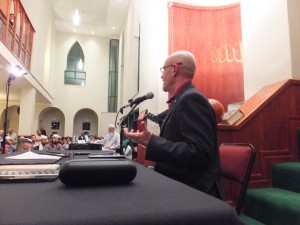Our Muslim authors begin their article by asking, “Is the Bible in our hands the same as during the time of Prophet Muhammad?” Immediately one must ask a number of questions: the same as that possessed by whom and where? That is, while it is very clear from the voluminous patristic sources (the writings of the early Christians) that the entirety of the biblical text as we know it today was well known long before the rise of Islam, and functional in the theological writings of the period, it does not follow that every manuscript of the day will reflect that reality. That is, given all of the factors involved in the production of biblical manuscripts, the idea of having an entire codex containing the entirety of the biblical text, or even of the NT canon, would be impractical for the vast majority of situations. Handwritten documents are vastly different than our modern printed texts. The majority of texts we have from that early period provide us with smaller collections, such as the Pauline corpus, for example, or Jude and Peter’s epistles. Not only would a smaller corpus be more easily produced, but one must also remember that discovery of historical documents rarely reveals to us what any person, group, or church possessed en toto. Another element to keep in mind is that when major codices were produced (such as Sinaiticus, Vaticanus, Alexandrinus, and later manuscripts) great cost was invested (the vellum alone would be quite costly, let alone the time to copy and produce it), and therefore devotional works would sometimes be included in the project (easier to do it all at once). Some have errantly assumed that the presence of such works implied, of necessity, the idea that the producers of the codex viewed the works as canonical.
Our authors continue, “Now if we apply the standards used for authenticating the integrity of the Qur’an and the hadith, such as the isnad (i.e., the chain of narration), to the Bible, the Christian missionary would be hard-pressed to present a decent isnad of his Bible going back to Muhammad leave alone Jesus.” Such a claim “stacks the deck” so to speak by, seemingly, ignoring the vast majority of textual evidence (are the authors suggesting that an incomplete manuscript from the third century is not sufficient evidence of the texts contained therein?) as well as the witness of the patristic sources. There is a tremendous amount of data relating to the New Testament documents that long pre-dates the rise of Islam. Only by redefining what kind of historical information can be used to establish the text can the Muslim make such a claim.
From this point our authors transition into the first of their attacks upon the Christian Scriptures, that of the canon. We will respond in our next installment.




